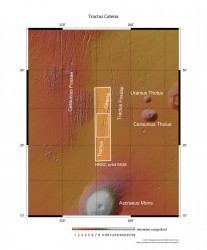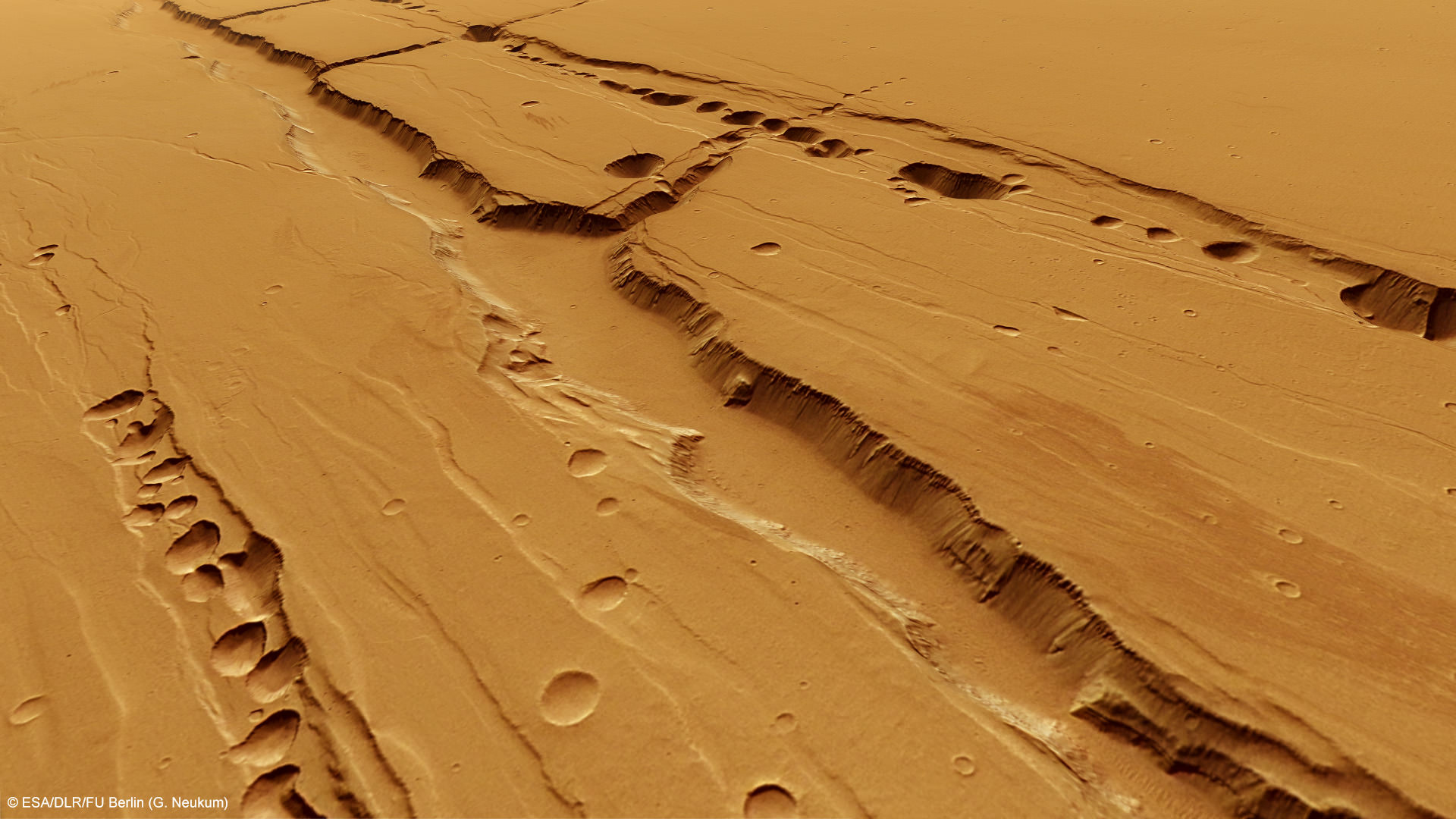[/caption]
Recent images from ESA’s Mars Express spacecraft reveal long rows of crater-like depressions lining the flanks of ancient Martian volcanoes located in the planet’s vast Tharsis region. Rather than being the result of impact events, these “pit chains” were likely caused by underground lava flows — and could be a prime location for look for life.
Like similar features found on Earth, lava tubes on Mars are the result of rivers of magma that carved channels beneath the surface. When these channels empty out, a hollow tube is left. If the roof of a particularly large tube is near the surface the roof can eventually collapse, creating a surface depression… or, in some cases, opening up to the surface entirely.
Even though volcanism on Mars isn’t currently active — the last eruptions probably took place at least over a million years ago — the features left by volcanic activity are still very much present today and likely well-preserved beneath the Martian surface.
Shielded from harsh solar and cosmic radiation, the interior of such lava tubes could provide a safe haven for microbial life — especially if groundwater had found its way inside at some point.
Even though the surface of Mars can receive 250 times the radiation levels found on Earth, the layers of soil and rock surrounding the tubes can provide adequate protection for life, whether it be ancient Martian microbes or future explorers from Earth.

Of course, water and protection from radiation aren’t the only factors necessary for life. There also needs to be some source of heat. Fortunately, the pit chains imaged by Mars Express happen to be within one of the most volcano-laden areas of the Red Planet, a region called the Arcadia quadrangle. Within this area exist some of the largest volcanoes on Mars — and the Tractus Catena pits are located right in the middle of them.
If a heat source were ever to have been beneath the surface of Mars, there would be a good chance it would have been here.
And if our own planet is any measure of such things, where there’s heat and water there is often some form of life — however extreme the conditions may be.
“I’d like to see us land ON a volcano,” Dr. Tracy Gregg, a volcanologist with the University of Buffalo, had once told Universe Today back in 2004. “Right on the flanks. Often the best place to look for evidence of life on any planet is near volcanoes.”
“That may sound counterintuitive, but think about Yellowstone National Park , which really is nothing but a huge volcano,” Gregg elaborated. “Even when the weather in Wyoming is 20 below zero, all the geysers, which are fed by volcanic heat, are swarming with bacteria and all kinds of happy little things cruising around in the water. So, since we think that the necessary ingredients for life on Earth were water and heat, we are looking for the same things on Mars.”
As far as any remaining geothermal activity still happening beneath the Martian surface?
“I strongly suspect there are still molten (or at least mushy) magma bodies beneath the huge Tharsis volcanoes,” Gregg had said. (Read the full article here.)
On Earth, lava tubes, caves and underground spaces of all kinds harbor life, often specialized forms that are found no place else. Could this be (or have once been) the case on Mars as well? Only future exploration will tell. Until then, places like Tractus Catena will remain on scientists’ short list of places to look.
Read more on the ESA website here.


“Often the best place to look for evidence of life on any planet is near volcanoes”
Because of all the times we’ve tried, that’s where we found the life….is this guy a time traveler and didn’t mention that?
He seems to have experience that could only have come from doing this before! Quick! Get a tachyon field sensor on him! I bet he’s still got the signature of temporal perturbations all over him!